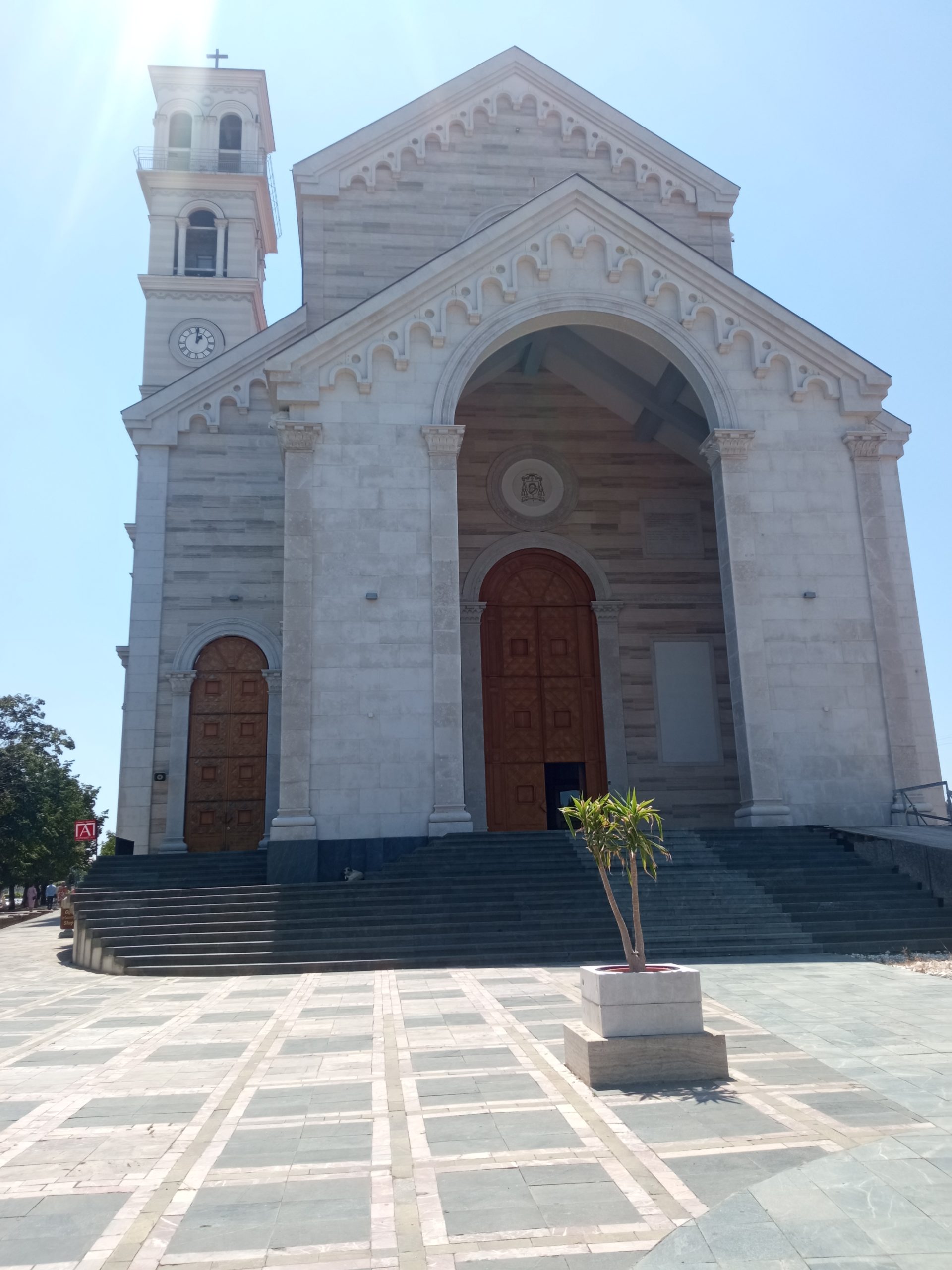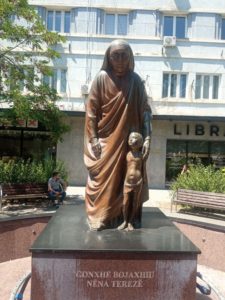In the heart of Pristina, Kosovo, stands a remarkable testament to unity, faith, and the enduring legacy of a beloved figure. The Cathedral of Saint Mother Teresa, known locally as “Katedralja Shën Nënë Tereza në Prishtinë,” graces the city’s skyline with its grandeur and significance. This Roman Catholic cathedral is a beacon of hope and a symbol of harmony in a region historically marked by diversity.
A Vision Takes Shape
In 2007, the Government of Kosovo embarked on an ambitious journey to bring to life a project of profound cultural and spiritual significance. Plans for the construction of the Cathedral of Saint Mother Teresa were officially approved, marking the beginning of an extraordinary endeavor. This cathedral, dedicated to the revered Albanian Roman Catholic nun and missionary, Saint Teresa of Calcutta, would soon become a symbol of faith and unity.
A Unifying Foundation
The foundation stone of the cathedral was ceremoniously laid in 2005 by none other than Ibrahim Rugova, the former president of Kosovo. Notably, President Rugova was a devout Muslim, exemplifying the spirit of unity and interfaith respect that would come to define the cathedral’s purpose. It was a powerful gesture, signifying that this place of worship transcended religious boundaries and was destined to serve as a symbol of peace.
A Journey to Completion
Construction work on the cathedral began in 2007, and it was unveiled in all its unfinished glory on 5th September 2010. This date held particular significance as it marked the anniversary of the passing of Mother Teresa in 1997, and it coincided with celebrations commemorating the centenary of her birth. The cathedral’s doors were opened to the public, inviting all to witness the beauty of its design and the unity it represented.
Consecration and Controversy
The formal consecration of the Cathedral of Saint Mother Teresa took place seven years later, on 5th September 2017, precisely two decades after the saintly nun’s passing. However, the cathedral’s construction was not without its share of controversy, particularly within Muslim circles. Some viewed the grand structure as disproportionate in a region where the Catholic population was relatively small. Despite the differences in perspective, the cathedral ultimately stood as a testament to the importance of tolerance and coexistence.
A Change of Residence
With the completion of the cathedral, the Roman Catholic Diocese of Prizren-Pristina made a historic move from Prizren to Pristina. The relocation signified the cathedral’s growing importance as a spiritual and cultural hub in the city, embracing its role as a place of unity and understanding.
A Celebration of Shared History
The Cathedral of Saint Mother Teresa has not only served as a place of worship but also as a venue for celebrating the rich shared history of Albanians and Austria. In January 2015, an exhibition highlighting this history took place within the cathedral’s hallowed walls. Distinguished guests, including Kosovo’s President Atifete Jahjaga and Austrian Foreign Minister Sebastian Kurz, came together to appreciate the cultural bonds that bind communities and nations.
A Symbol of Solidarity
In Kosovo, the cathedral plays a significant role in the celebration of Christmas. Some of the largest Christmas masses in the region are held within its sacred confines, where local Muslims often join their Catholic brethren in a heartwarming display of solidarity and shared joy during the holiday season.
The Cathedral of Saint Mother Teresa stands not only as a place of worship but as a beacon of unity, a testament to the enduring spirit of harmony, and a symbol of hope for a brighter future in Kosovo. It reminds us that faith can bridge divides and that unity is not bound by religious affiliations but by the shared values of love, peace, and respect for one another.
Status of Mother Teresa in Pristina, Kosovo
Nestled in a quaint park along Pristina’s Bulevardi Nëna Terezë stands a poignant tribute to a remarkable soul. The statue of Mother Teresa, born Agnes Gonxha Bojaxhiu in 1910 in Skopje, North Macedonia, is a testament to her enduring legacy. This ethnic Albanian nun founded the Missionaries of Charity, a name synonymous with selfless compassion and unwavering devotion. Mother Teresa’s lifework, particularly her tireless efforts among the destitute in Calcutta, etched her name into the annals of history. Her passing in 1997 marked the end of an era, but her spirit lives on, captured beautifully in this statue that graces the heart of Pristina.








